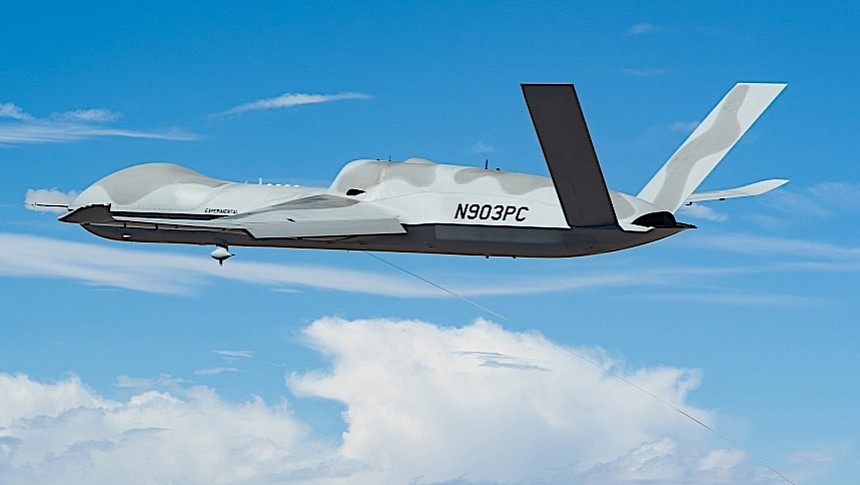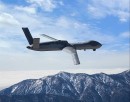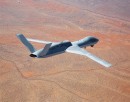For years now drones have been indispensable assets for military operations. They are mainly used for surveillance purposes, but also to strike targets deemed worthy of striking for various reasons. But as technology progresses, the capabilities of drones evolve as well.
Take the MQ-20 Avenger for instance. It came about in the late 2000s as a combat drone, and it's made by General Atomics. Work on it is far from over, so the thing is not yet conducting regular military missions. It does, however, help advance all sorts of new technologies.
Avenger's most recent exploit on this front has it turning into a sort of tow truck. More specifically, it was just used to prove a tech that might one day allow a drone to snatch another one and carry it back home, or to where ever it's needed.
The test took place back in mid-September at the Dugway Proving Ground in Utah, but we're only now learning about it. It required an Avenger to be fitted with a commercial helicopter rescue hoist and try to catch a smaller drone mid-flight.
The hoist was supplied by Breeze-Eastern, one of the most famous maker of such things. At one end, the towline was connected to the Avenger, while at the other it was fitted with something General Atomics describes as a smart feature.
That would be a device meant to send out the hoist's position to another uncrewed aircraft, so it knows where to go. Once it reaches the end of the towline, the smaller drone attaches itself to the mechanical interface there, folds its wings, stops its engine, and is pulled into a captive carriage state on the larger drone.
The technology was put together as a means to help with aerial recovery of military assets (specifically Small Unmanned Aircraft Systems/Air-Launched Effects) and their transport back to base. The test, although limited to the towline communicating its position and not an actual capture, proved the concept can work, and effectively opened up a room full of other potentially useful ideas.
The same technology could be used, for instance, to refuel or recharge the drones mid-flight, even from other uncrewed flying platforms. More importantly, there's the possibility of re-arming drones in the air, making them effectively capable of flying around the clock.
Thanks to its capabilities, the MQ-20 Avenger is seen as a primary target to be transformed into a mobile supply center of this kind (the MQ-9A Reaper may be another option). The drone can fly for at most 18 hours at speeds of 400 mph (650 kph), and at altitudes of up to 50,000 feet (15,000 meters).
A network of them, backed by the smaller drones they assist, could form a "persistent, expansive grid for surveillance, electronic attack, enemy air defense suppression, communication pathways, or joint all-domain mobile command and control for days or weeks at a time."
General Atomics did not say how far along in the development of the hoist system it is, or when we should expect a real-life application.
Avenger's most recent exploit on this front has it turning into a sort of tow truck. More specifically, it was just used to prove a tech that might one day allow a drone to snatch another one and carry it back home, or to where ever it's needed.
The test took place back in mid-September at the Dugway Proving Ground in Utah, but we're only now learning about it. It required an Avenger to be fitted with a commercial helicopter rescue hoist and try to catch a smaller drone mid-flight.
The hoist was supplied by Breeze-Eastern, one of the most famous maker of such things. At one end, the towline was connected to the Avenger, while at the other it was fitted with something General Atomics describes as a smart feature.
That would be a device meant to send out the hoist's position to another uncrewed aircraft, so it knows where to go. Once it reaches the end of the towline, the smaller drone attaches itself to the mechanical interface there, folds its wings, stops its engine, and is pulled into a captive carriage state on the larger drone.
The technology was put together as a means to help with aerial recovery of military assets (specifically Small Unmanned Aircraft Systems/Air-Launched Effects) and their transport back to base. The test, although limited to the towline communicating its position and not an actual capture, proved the concept can work, and effectively opened up a room full of other potentially useful ideas.
The same technology could be used, for instance, to refuel or recharge the drones mid-flight, even from other uncrewed flying platforms. More importantly, there's the possibility of re-arming drones in the air, making them effectively capable of flying around the clock.
Thanks to its capabilities, the MQ-20 Avenger is seen as a primary target to be transformed into a mobile supply center of this kind (the MQ-9A Reaper may be another option). The drone can fly for at most 18 hours at speeds of 400 mph (650 kph), and at altitudes of up to 50,000 feet (15,000 meters).
A network of them, backed by the smaller drones they assist, could form a "persistent, expansive grid for surveillance, electronic attack, enemy air defense suppression, communication pathways, or joint all-domain mobile command and control for days or weeks at a time."
General Atomics did not say how far along in the development of the hoist system it is, or when we should expect a real-life application.








